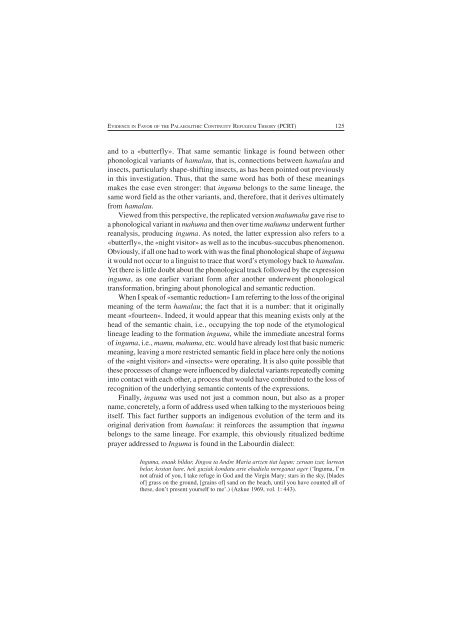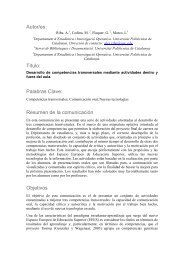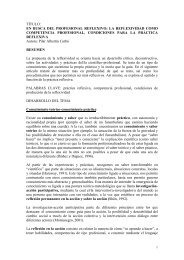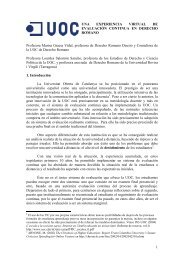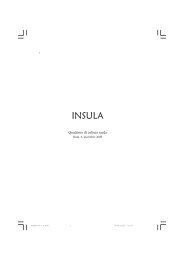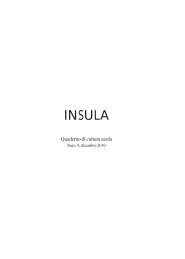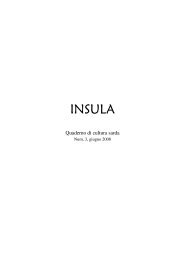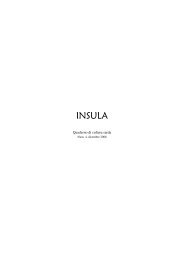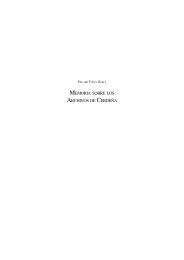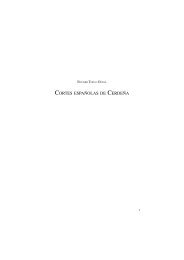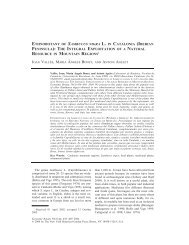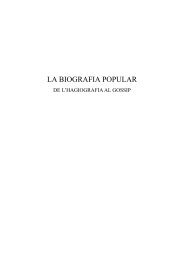Impaginato 5.p65 - Universitat Rovira i Virgili
Impaginato 5.p65 - Universitat Rovira i Virgili
Impaginato 5.p65 - Universitat Rovira i Virgili
You also want an ePaper? Increase the reach of your titles
YUMPU automatically turns print PDFs into web optimized ePapers that Google loves.
EVIDENCE IN FAVOR OF THE PALAEOLITHIC CONTINUITY REFUGIUM THEORY (PCRT)<br />
125<br />
and to a «butterfly». That same semantic linkage is found between other<br />
phonological variants of hamalau, that is, connections between hamalau and<br />
insects, particularly shape-shifting insects, as has been pointed out previously<br />
in this investigation. Thus, that the same word has both of these meanings<br />
makes the case even stronger: that inguma belongs to the same lineage, the<br />
same word field as the other variants, and, therefore, that it derives ultimately<br />
from hamalau.<br />
Viewed from this perspective, the replicated version mahumahu gave rise to<br />
a phonological variant in mahuma and then over time mahuma underwent further<br />
reanalysis, producing inguma. As noted, the latter expression also refers to a<br />
«butterfly», the «night visitor» as well as to the incubus-succubus phenomenon.<br />
Obviously, if all one had to work with was the final phonological shape of inguma<br />
it would not occur to a linguist to trace that word’s etymology back to hamalau.<br />
Yet there is little doubt about the phonological track followed by the expression<br />
inguma, as one earlier variant form after another underwent phonological<br />
transformation, bringing about phonological and semantic reduction.<br />
When I speak of «semantic reduction» I am referring to the loss of the original<br />
meaning of the term hamalau; the fact that it is a number: that it originally<br />
meant «fourteen». Indeed, it would appear that this meaning exists only at the<br />
head of the semantic chain, i.e., occupying the top node of the etymological<br />
lineage leading to the formation inguma, while the immediate ancestral forms<br />
of inguma, i.e., mamu, mahuma, etc. would have already lost that basic numeric<br />
meaning, leaving a more restricted semantic field in place here only the notions<br />
of the «night visitor» and «insects» were operating. It is also quite possible that<br />
these processes of change were influenced by dialectal variants repeatedly coming<br />
into contact with each other, a process that would have contributed to the loss of<br />
recognition of the underlying semantic contents of the expressions.<br />
Finally, inguma was used not just a common noun, but also as a proper<br />
name, concretely, a form of address used when talking to the mysteriouos being<br />
itself. This fact further supports an indigenous evolution of the term and its<br />
original derivation from hamalau: it reinforces the assumption that inguma<br />
belongs to the same lineage. For example, this obviously ritualized bedtime<br />
prayer addressed to Inguma is found in the Labourdin dialect:<br />
Inguma, enauk bildur, Jingoa ta Andre Maria artzen tiat lagun; zeruan izar, lurrean<br />
belar, kostan hare, hek guziak kondatu arte ehadiela nereganat ager (‘Inguma, I’m<br />
not afraid of you, I take refuge in God and the Virgin Mary; stars in the sky, [blades<br />
of] grass on the ground, [grains of] sand on the beach, until you have counted all of<br />
these, don’t present yourself to me’.) (Azkue 1969, vol. 1: 443).


